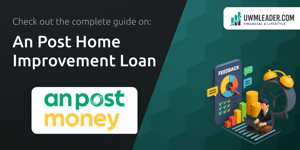
In today’s complicated financial environment, selecting the perfect loan means looking past the surface of the interest rate. Borrowers often become focused on securing the lowest percentage, yet this approach overlooks critical aspects that shape the true cost of borrowing. By gaining clarity on origination fees, loan lengths, and repayment strategies, you can craft a financial plan that aligns with your aspirations and safeguards your future. This comprehensive guide will illuminate the full spectrum of loan components, equipping you with actionable insights for confident decision-making.
When you begin your search for the ideal mortgage, car loan, or personal financing, the spectrum of options can be overwhelming. Each loan type carries unique features that influence monthly payments, overall cost, and flexibility. Understanding these key categories is essential for tailoring a borrowing solution that matches your lifestyle and long-term objectives.
Choosing the right term involves balancing immediate cash flow with long-term savings. For those able to allocate more monthly funds, a 15-year plan may save thousands in interest, while a 30-year option fits tighter budgets by reducing monthly obligations. Reflect on your current financial position, risk tolerance, and future goals to determine the term backdrop that aligns with your vision.
Origination fees are upfront costs charged by lenders to process your loan application. Typically falling between 0.5% and 1% of the loan amount, these fees cover administrative expenses and contribute to lender profitability. Although they represent a small fraction of the total, failing to account for them can skew your perception of a loan’s true expense.
These charges can be handled in various ways. They may be paid upfront at closing, increasing your initial cash outlay. Alternatively, some borrowers choose to roll these fees into the principal balance, which enlarges the financed amount and leads to higher monthly payments. In certain markets, sellers or builders offer credits to cover origination fees during negotiations. Lenders may also extend promotional incentives or rebates that offset these fees, though such offers sometimes correlate with slightly higher interest rates.
Understanding how origination fees are structured and disclosed is vital. Always request a detailed breakdown of closing costs and consider negotiating with your lender to reduce or waive these charges. In a crowded market, subtle reductions in fees can translate into substantial savings, allowing you to redirect that capital toward other financial priorities.
Beyond the headline rate, lenders price loans using a multifaceted approach that encompasses several internal cost elements. The cost-plus loan pricing model breaks down the interest rate into four fundamental components, each affecting the rate you ultimately receive:
While borrowers cannot directly control these internal factors, understanding that the quoted rate reflects more than just market trends empowers you to shop strategically. Different lenders will emphasize one component over another, enabling you to compare offers beyond simple rate figures. By examining loan estimates line-by-line, you can discern which lender delivers the most favorable combination of costs and protections.
Securing a low rate is only the first step; proactive management of your loan can significantly influence the total amount paid. Implementing intentional repayment tactics allows you to harness the power of compound savings and expedite freedom from debt.
By integrating these methods into your debt reduction blueprint, you can reduce stress, save money, and move toward financial independence faster than following a standard payment schedule. Prioritize flexibility and remain vigilant for market shifts that could open doors to even cheaper credit.
Certain government-backed programs impose limits on origination fees, providing additional consumer protections and making borrowing more predictable.
These fee caps shield veterans, first-time buyers, and low-to-moderate income borrowers from unexpected costs. However, program qualification requirements must still be met, including credit score thresholds and property standards. Consult with a specialized loan officer to verify your eligibility and explore how these benefits can align with your purchase or refinance goals.
Do not assume listed fees and rates are non-negotiable. In a competitive lending environment, negotiating fees can unlock hidden value. Borrowers armed with knowledge about prevailing rates and fee structures hold significant leverage.
Many lenders offer credits or rebates to cover origination fees, though these incentives often accompany slightly higher interest rates. Evaluate the trade-off between upfront savings and increased monthly costs, calculating which route yields the best outcome over your anticipated loan duration.
If upfront fees pose a barrier, several assistance programs and grants exist to ease the burden. Local and state agencies, nonprofit organizations, and community development initiatives may offer funds specifically for closing costs, including origination fees. These programs often prioritize first-time homebuyers, low-income families, and targeted demographic groups, enabling qualified applicants to finance a larger portion of their purchase with minimal out-of-pocket expense.
Investigate available options in your region by contacting housing agencies or certified counseling organizations. Bundling assistance with competitive interest rates can transform a daunting down payment and fee structure into a manageable pathway toward homeownership.
Understanding loan terms extends far beyond simply chasing the lowest interest rate. A holistic approach — one that scrutinizes origination fees, term lengths, and repayment strategies — equips you to navigate the complexities of borrowing with confidence and foresight. By comparing detailed loan estimates, negotiating favorable terms, and exploring fee assistance, you stand in the best position to select a financial product that supports your short-term needs and long-term aspirations.
Every borrowing decision carries ripple effects that touch your budget, your peace of mind, and your financial future. Embrace this comprehensive view can help illuminate hidden costs and reveal opportunities for savings, ensuring that your next loan becomes a powerful tool in building lasting wealth and security.
References













